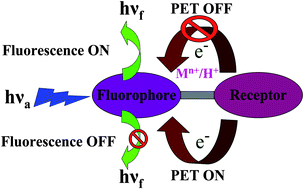Selective fluorescence sensing of Cu(ii) and Zn(ii) using a new Schiff base-derived model compound: naked eye detection and spectral deciphering of the mechanism of sensory action†
Abstract
A new

* Corresponding authors
a
Department of Chemistry, University of Calcutta, 92, A.P.C. Road, Kolkata-700009, India
E-mail:
nguchhait@yahoo.com
Fax: +91 3323519755
Tel: +91 3323508386
A new

 Please wait while we load your content...
Something went wrong. Try again?
Please wait while we load your content...
Something went wrong. Try again?
A. Ganguly, B. K. Paul, S. Ghosh, S. Kar and N. Guchhait, Analyst, 2013, 138, 6532 DOI: 10.1039/C3AN00155E
To request permission to reproduce material from this article, please go to the Copyright Clearance Center request page.
If you are an author contributing to an RSC publication, you do not need to request permission provided correct acknowledgement is given.
If you are the author of this article, you do not need to request permission to reproduce figures and diagrams provided correct acknowledgement is given. If you want to reproduce the whole article in a third-party publication (excluding your thesis/dissertation for which permission is not required) please go to the Copyright Clearance Center request page.
Read more about how to correctly acknowledge RSC content.
 Fetching data from CrossRef.
Fetching data from CrossRef.
This may take some time to load.
Loading related content
